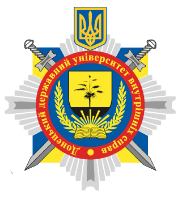INTEGRATION OF ARTIFICIAL INTELLIGENCE TECHNOLOGY INTO THE ACTIVITIES OF THE NATIONAL POLICE OF UKRAINE: PROSPECTS AND CHALLENGES
DOI:
https://doi.org/10.32782/2709-9261-2024-3-11-9Keywords:
artificial intelligence, National Police, automation, cybersecurity, personal dataAbstract
The article is dedicated to the integration of artificial intelligence (AI) into the activities of the National Police of Ukraine. It emphasizes that the use of AI can significantly transform information processing, automate processes, and enhance police efficiency, particularly in monitoring the Internet and social networks to prevent and solve crimes. However, one of the key challenges in implementing AI in law enforcement is the lack of proper legal regulation. The use of AI-based systems, such as facial recognition technologies or crime prediction tools, may lead to violations of citizens’ privacy and even discrimination if these systems are employed without appropriate oversight and transparency. The need to protect personal data in the context of increasing AI usage is especially pressing, as Ukraine must comply with international standards such as the General Data Protection Regulation (GDPR) to ensure adequate information protection. In addition, overcoming technical limitations related to infrastructure, unstable power supply, and insufficient resources is essential for the effective use of AI. The article proposes the introduction of legal acts to regulate AI use and ensure its controlled application. The creation of an independent oversight mechanism, as well as the implementation of modern data protection technologies such as encryption, will help minimize the risks of unauthorized access to personal information. Thus, the combination of legislative regulation, technical modernization, and process transparency will contribute to enhancing police efficiency and protecting human rights in the context of digital transformation.
References
Зачек О. І., Дмитрик Ю. І., Сеник В. В. Роль штучного інтелекту в підвищенні ефективності правоохоронної діяльності. Науковий вісник Львівського державного університету внутрішніх справ. Серія юридична. 2023. № 3. С. 148–156. DOI: https://doi.org/10.32782/2311-8040/2023-3-19
Police use of AI: A Force for good or a public threat? Eviden. 18.09.2023. URL: https://eviden.com/insights/blogs/policeuse-of-ai-a-force-for-good-or-a-public-threat/ (дата звернення: 20.09.2024).
Шевчук Т. А., Свистун Я. В. Використання штучного інтелекту у протидії злочинності. Вісник кримінологічної асоціації України. 2021. № 2 (25). С. 128–134.
Artificial Intelligence. Wikipedia : сайт. URL: https://en.wikipedia.org/wiki/Artificial_intelligence (дата звернення: 20.09.2024).
Що таке штучний інтелект: історія, види та складові. GIGACLOUD : сайт. 16.05.2023. URL: https://gigacloud.ua/blog/navchannja/scho-take-shtuchnij-intelekt-istorija-vidi-ta-skladovi (дата звернення: 20.09.2024).
Іванотчак О., Кеденко І., Куліш С., Глібчук А., Дмитренок С. Концептуалізація нейромоделей задач підтримки прийняття рішень. Вісник Хмельницького національного університету. Технічні науки. 2024. № 3, т. 1 (335). С. 78–87. DOI: 10.31891/2307-5732-2024-335-3-11
Інтелектуальні системи автоматизації : монографія / Аврунін О. Г., Владов С. І., Петченко М. В., Семенець В. В., Татарінов В. В., Тельнова Г. В., Філатов В. О., Шмельов Ю. М., Шушляпіна Н. О. Кременчук : Вид-во «НОВАБУК», 2021. 322 с.
Neural Network. Wikipedia : сайт. URL: https://en.wikipedia.org/wiki/Artificial_neural_network (дата звернення: 20.09.2024).
Deep Learning. Wikipedia : сайт. URL: https://en.wikipedia.org/wiki/Deep_learning (дата звернення: 20.09.2024).
Каткова Т. Г. Штучний інтелект в Україні: правові аспекти. Право і суспільство. 2020. № 6. С. 46–55. DOI: https://doi.org/10.32842/2078-3736/2020.6.1.8
Турута О. В., Турута О. П. Штучний інтелект крізь призму фундаментальних прав людини. Науковий вісник Ужгородського національного університету. Серія: Право. 2022. № 71. С. 49–54. DOI: https://doi.org/10.24144/2307-3322.2022.71.7
Яровой Т. С. Можливості та ризики використання штучного інтелекту в публічному управлінні. Economic Synergy. 2023. № 2. С. 36–47. DOI: https://doi.org/10.53920/ES-2023-2-3
OpenAI. ChatGPT Model. URL: https://openai.com/chatgpt (дата звернення: 20.09.2024).
Використання технологій штучного інтелекту у протидії злочинності : матеріали наук.-практ. онлайн-семінару (м. Харків, 5 листоп. 2020 р.). Харків : Право, 2020. 112 с.
Google Speech-to-Text. GoogleCloud : сайт. URL: https://cloud.google.com/speech-to-text (дата звернення: 20.09.2024).
Real-time information – reimagined. DataMiner : сайт. URL: https://www.dataminr.com (дата звернення: 20.09.2024).
Інформаційно-аналітична робота в оперативно-розшуковій діяльності Національної поліції : навч. посібник /А. В. Мовчан. Львів : ЛьвДУВС, 2017. 244 с.
Real-Time Object Detection. YOLO : сайт. URL: https://pjreddie.com/darknet/yolo/ (дата звернення: 20.09.2024).
Predictive Policing Technology. PredPol : сайт. URL: https://www.predpol.com (дата звернення: 20.09.2024).
Data-to-Everything Platform. Splunk : сайт. URL: https://www.splunk.com (дата звернення: 20.09.2024).
Мовчан А. В., Мовчан М. А. Використання безпілотних літальних апаратів у діяльності правоохоронних органів. Соціально-правові студії. 2020. Вип. 3 (9). С. 104–110.
Demonstrating Autonomous Operations in the Public Safety & Security Sector. The Drone Centre : сайт. URL: https://thedronecentre.ae/autonomous-drones-in-the-police-force/ (дата звернення: 20.09.2024).
Особливості застосування безпілотних літальних апаратів органами та підрозділами поліції: метод. рек. /А. А. Саковський, С. М. Науменко, С. І. Кравченко, І. М. Єфіменко та ін. Київ : Нац. акад. внутр. справ. 2022. 72 с.
CrowdStrike: We Stop Breaches with AI-native Cybersecurity. CrowdStrike : сайт. URL: https://www.crowdstrike.com/en-us/ (дата звернення: 20.09.2024).
Україна з 14 січня 2022 року залишається на першому місці у світі за кількістю кібератак проти неї – заступник голови Держспецзв’язку. Interfax – Україна : сайт. 23.05.2023. URL: https://interfax.com.ua/news/interview/911979.html (дата звернення: 20.09.2024).
Права людини в епоху штучного інтелекту: виклики та правове регулювання. 2024. 44 с. URL: https://eu4digitalua.eu/wp-content/uploads/2024/02/guia_ukr_5.pdf (дата звернення: 20.09.2024).
Artificial intelligence liability directive. BRIEFING EU Legislation in Progress. European Parliament : сайт. URL: https://www.europarl.europa.eu/RegData/etudes/BRIE/2023/739342/EPRS_BRI(2023)739342_EN.pdf (дата звернення: 20.09.2024).
Про захист персональних даних : Закон України від 1 червня 2010 року № 2297-VI (із змін.) // БД «Законодавство України» / ВР України. URL: http://zakon5.rada.gov.ua/laws/show/2297-17 (дата звернення: 20.09.2024).
Конституція України від 28 червня 1996 р. (із змін.) // БД «Законодавство України» / ВР України. URL: http://zakon1.rada.gov.ua/laws/show/254к/96-вр (дата звернення: 20.09.2024).
Конвенція про захист прав людини і основоположних свобод: прийнята Радою Європи 4 листопада 1950 р. // БД «Законодавство України» / ВР України URL: https://zakon.rada.gov.ua/laws/show/995_004 (дата звернення: 20.09.2024).
Синжерян А. А. Історія становлення законодавства Україні про захист персональних даних. European scientific congress : The 12th International scientific and practical conference (Madrid, Spain, December 25–27, 2023). Madrid, 2023. P. 687–690.
Proposal for a Regulation laying down harmonized rules on Artificial Intelligence (Artificial Intelligence Act). European Commission : сайт. URL: https://eur-lex.europa.eu/legal-content/EN/TXT/?uri=CELEX%3A52021PC0206 (дата звернення: 20.09.2024).





